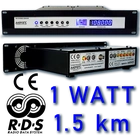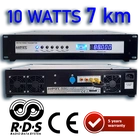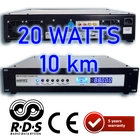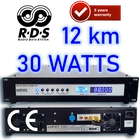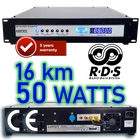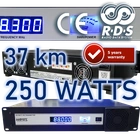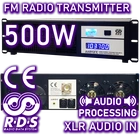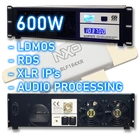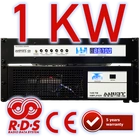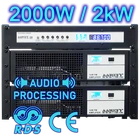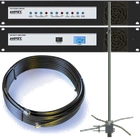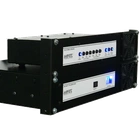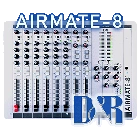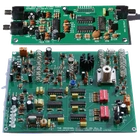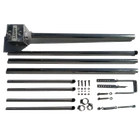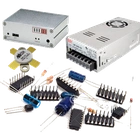What is the Range of an Radio Transmitter?

Hi there.
I'm Paul Hollings (LinkedIn profile) Head Engineer at Aareff Systems and I'm going try and explain how range and power works with radio transmitters.
In theory the range of a transmitted radio signal is infinite regardless of power used, basically it goes on and on forever until it encounters an obstruction. More power helps to penetrate any obstructions. Given this, when engineering and planning a station it is always better to consider the issues that limit the range.
Distance Is Limited By:
a) ANTENNA HEIGHT. The radio horizon, this is just a little further than the visible horizon, some rule of thumb figures are 20 to 30% further than the visible horizon. What this means is if you look out from where your antennas are mounted with good pair of binoculars, wherever you can see, you will broadcast to and about 20 to 30% further.
b) INTERFERENCE. Other sources of interference from other stations and FM broadcasts operating on the same frequency. For example the antenna may be able to see 20 miles, but if another station's FM broadcast is on the same frequency 20 miles away, it will block/interfere with the signal.
c) RADIO TRANSMITTER POWER. If the antenna can see 15 miles and say 1 Watt ERP of power used, it's very likely that about 1 or 2 miles of range will result. This is quite simply because there is not enough power to propagate the signal 20 miles. If 50 Watt ERP is used, it's very likely that 20 miles of range will be achieved. This is because 50 Watt ERP is ample power to propagate a strong signal 20 miles. If a 1000 Watts of power is used, it is very likely that signal will only propagate just over 20 miles. This is because the range is limited as described in point a) above.
A typical example is:
Our 100 watt radio transmitter using a high gain antenna like the Aareff 5/8's vertical which has a gain of 4.8 dBi, and using 20mt of LMR400 low loss coax would effectively more than double the power to 250 Watts EIRP. (up to 24 miles range)
With 25 years of customer reports, a lot of testing on our part, in addition to the science and math behind this, we have been able to get some rough average rule of thumb numbers on range, they are as follows:
This table is based on maximum reports from customers mostly using house roofs or small towers.
|
Watts EIRP |
Range Miles |
Range Km |
|
1 2 4 8 16 32 64 128 256 512 |
1.5 2.1 3.0 4.2 6.0 8.6 12.0 17.0 24.0 34.0 |
2.2 3.1 4.5 6.3 9.0 12.9 18.0 25.5 36.0 51.0 |
EIRP ( Effective Isotropic Radiated Power )
This is the power radiated from the antenna. All antenna systems have a degree of power gain. When calculating the gain of a complete antenna system including the cable, the main factors are the amount of actual antenna gain ( dBi ) and the amount of loss ( dB ) through the antenna cable or coax. You can use our online dBi/dB loss and gain calculator here using your own values to calculate your EIRP. Also more info at Wikipedia EIRP
The four graphs below are based on average customer reports in some directions, but not all directions. Basically they show the maximum ranges really ever recorded for our 10kW, 25kW, 50kW and 100kW EIRP systems. Most of the reports were radio station listeners that phoned, texted, Whatsapp etc into the radio station programs operated by our customers.




Better Accuracy
If you need more precise results, well we can't get 100% accuracy, but we can get about 85%, which is much better than the 'rule of thumb' numbers shown above. We get 85% accuracy by using radar height data collected by NASAs space shuttle during it's operations about 15 years ago.
If you go to my personal site you can see some spectacular plots from all angles of the iHeartMedia 100kW ERP FM Services in Miami compared with the FCCs 60dBuV/m contour line.
For a small fee we can make plots like this for you, we just need to know the GPS coordinates of the antenna site, the the tower or structure height and your level of EIRP or ERP. If you like more details on this, message us at info@aareff.com or WS +1 829 698 0733

 +1 829 698 0733
What Do You Need? Talk To Us
+1 829 698 0733
What Do You Need? Talk To Us
